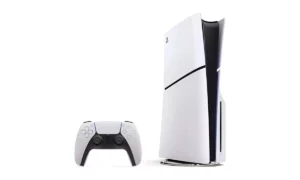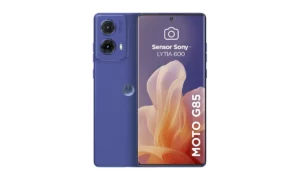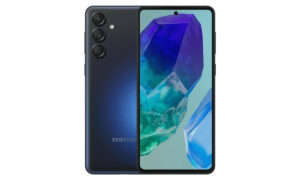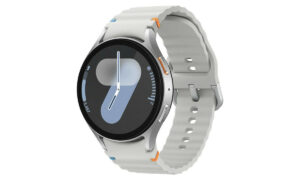
Samsung invade território da Micro Four Thirds com série NX de câmeras híbridas
As incursões da Samsung no campo dos equipamentos fotográficos de alto desempenho até agora têm sido cautelosas (leia-se: derivativas), mas a série NX, programada para revelação na PMA desta semana, é meio DSLR, meio convencional, e muito interessante.
O anúncio tem poucos detalhes, mas eis o mais interessante: a série NX é um sistema híbrido, o que significa que ela não tem uma caixa de espelho ou um visualizador físico através da lente, mas retém um sensor de imagem APS-C do tamanho de uma DSLR e capacidade para lentes intercambiáveis. Em outras palavras, ela é conceitualmente idêntica às Micro Four Thirds tais como a Panasonic Lumix DMC G1. No entanto, o que faz da NX particularmente interessante é o seu corpo – ele é bastante fino. O nosso maior problema com a DMC G1 era o seu volume, já que era apenas ligeiramente mais compacta que algumas das DSLRs básicas menores, tais como a Nikon D40, apesar do flange mais curto e da ausência de um pentaprisma. A Samsung parece ter roubado e adotado o espírito da Micro Four Thirds, fazendo dela bastante fina para uma câmera com suas capacidades.
O lançamento está programado para o segundo semestre de 2009 e as especificações provavelmente serão destrinchadas na PMA que começa hoje. Abaixo o press release completo:
SEOUL, KOREA – March 2, 2009 – Samsung Digital Imaging Co., Ltd. used PMA 2009 as the global launching pad for the NX Series, the company’s revolutionary new family of hybrid digital cameras. A new concept digital camera, the NX Series offers the performance and image quality of a DSLR and the portability and convenience of a compact point-and-shoot. With the NX Series, Samsung will become a global leader in the new hybrid market.
Samsung’s new NX Series bridges the gap between a DSLR and compact point-and-shoot digital camera by combining the benefits of both in one new model. Like conventional DSLRs, the NX Series utilizes an APS?C sized image sensor providing a much larger surface area to gather light and produce higher-quality images than comparable digital camera systems. Unlike a DSLR, the NX Series does not feature a mirror box and employs an ultra-precise Electronic Viewfinder (EVF). The use of an EVF has allowed Samsung engineers to significantly reduce the size and weight of the new camera system by decreasing the distance between the lens and image sensor (flange back) by approximately 60% compared to traditional DSLRs. In addition to utilizing the EVF, consumers can also take advantage of the camera’s Live View functionality to frame their shots on the NX Series’ high?resolution screen.
Samsung has recently intensified its focus on the digital imaging market and established a separate company dedicated exclusively to digital imaging in Samsung Digital Imaging Company. The new company was formed to focus on the development of its digital still cameras around world’s first and best in class features, design, and easy-to-use interfaces, and will work towards achieving the company’s stated goal of becoming the world’s leading digital imaging company.
"We estimate that the hybrid digital camera market will be over 20% of the global digital still camera market by 2012," said Sang-jin Park, CEO of Samsung Digital Imaging Company. "With the release of the NX Series, a digital camera that combines the strengths of a DSLR and compact digital camera, Samsung Digital Imaging will become a global leader in the new hybrid digital camera market and achieve the company’s goal to become the global leader in the digital camera market by 2012."
Samsung Digital Imaging Company also creates a much more efficient vertical alignment between related Samsung affiliate business units including semiconductor, LCD panel and consumer electronics. This new vertical alignment will create competitive advantages for Samsung by fostering greater collaboration between Samsung affiliate business units and allowing the company to develop and deliver highly-innovative digital imaging products that set the standard for the industry, including the newly unveiled NX Series.
The first model of NX Series will be available in the second-half of 2009.













